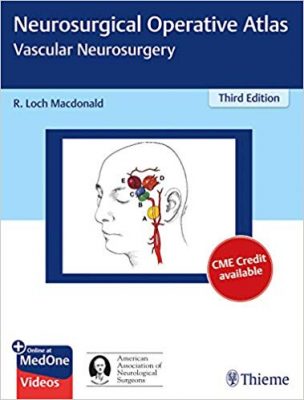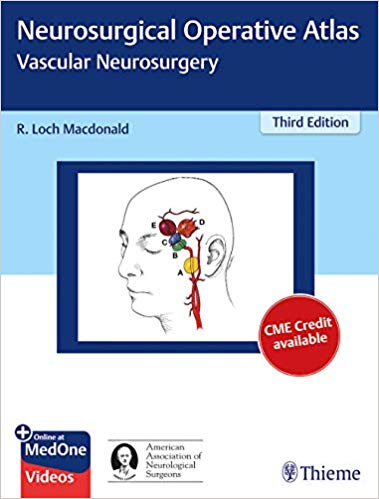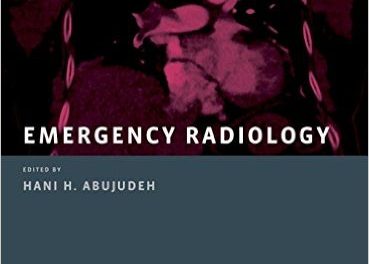 Editor: R. Loch Macdonald
Editor: R. Loch Macdonald
Publisher: Thieme – 294 pages
Book Review by: Nano Khilnani
This third (2019) edition of this book has a very extensive range of neurosurgeries covered in it, as you will note from the titles of the chapters listed below. The second edition had appeared in 2008, and we had published a review on it in BIZ INDIA Online News – Neurosurgical Operative Atlas, 2nd edition – http://www.bizindia.net/?s=Neurosurgical+Operative+Atlas+%E2%80%93+Vascular+Neurosurgery%2C+
The Foreword writer Dr. Aaron A. Cohen-Gadol has high praise for the editor of this volume:
“Loch Macdonald: is a very rare, gifted individual who is not only a master neurosurgeon, but also a true academician and entrepreneur. He has once again created one of the most complete collections of techniques for micro-neurosurgery, This work is a clear demonstration of his passion and contributions to excellence in operative neurosurgery.”
He continues to point out that he is “impressed by the breadth and depth of the content,” that the “technical pearls are clearly defined and discussed in detail,” and that this book “is an excellent resource for residents and fellows as well as for practicing neurosurgeries the night before their surgeries.”
One hundred and five specialists in various aspects of neurosurgery, from seven countries – Australia, Brazil, Canada, Finland, Germany, Switzerland, and the United States – authored or co-authored the 39 chapters of this extensive work on the subject. We name them below as the best means of providing you an overview of the topics covered and discussed in this valuable book:
- Part I – Aneurysms / Subarachnoid Hemorrhage
- Vascular and Microsurgical Instrumentation and Equipment
- How to Repair the Intracranial Aneurysm: Clipping or Coiling Decision Making
- Aneurysm Surgery Techniques
- Pterional Approach
- Minimally Invasive Approaches to Aneurysms
- Ophthalmic Segment Aneurysms
- Supraclinoid Internal Carotid Artery Aneurysms
- Anterior Communicating Artery Aneurysms
- Middle Cerebral Artery Aneurysms
- Distal Anterior Cerebral Artery Aneurysms: Anterior Interhemispheric Approach
- Pterional Transsylvian and Extended Approaches for Upper Basilar Aneurysms
- Orbitocranial Zygomatic Approach for Basilar and Posterior Artery Aneurysms
- Subtemporal and Pretempolar Approaches for Basilar and Posterior Cerebral Artery Aneurysms
- Transsylvian and Transclinoidal and Transcavernous Approach for Basilar Bifurcation Aneurysms
- Vertebral Artery and Posterior Inferior Cerebellar Artery Aneurysms
- Retrolabyrinthine Transsigmoid and Extreme Lateral Infrajugular Transcondylar Transtubercular Exposures for Aneurysms
- Vertebral Confluence and Midbasilar Aneurysms Including Transpetrosal Approach
- Fusiform, Dolichoectatic, and Dissecting Aneurysms
- Endoscopic Approaches to intracranial Aneurysms
- Microsurgical Treatment of Previously Endovascularly Treated Aneurysms
- Pterional Craniotomy for Exposure of Contralateral Aneurysms
- Infectious Intracranial Aneurysms
- Part II – Vascular Malformations
- Arteriovenous Malformations of the Cerebral Convexities
- Arteriovenous Malformations of the Basal Ganglia and Thalamus
- Intraventricular and Deep Arteriovenous Malformations
- Vein of Galen Malformations
- Posterior Fossa Arteriovenous Malformations
- Superficial Cavernous Malformations
- Brainstem Cavernous malformations
- Spinal Vascular Malformations
- Carotid Cavernous Fistulas
- Transverse and Sigmoid Dural Arteriovenous Fistula
- Tentorial and Posterior Fossa Dural Arteriovenous Fistulas
- Anterior Fossa, Superior Sagittal Sinus, and Convexity Dural Arteriovenous Malformations
- Part III – Ischemic and Other Cerebrovascular Diseases
- Carotid Endarterectomy
- Superior Temporal Artery to Middle Cerebral Artery Bypass
- Indirect Bypasses to Moyamoya Disease
- Positional Compression of the Vertebral Arteries
- Minimally Invasive Approaches for Spontaneous Intracerebral Hemorrhage
In this latest edition, some chapters that were in the previous edition have been updated with advances in knowledge, others describing out-of-date operations have been discarded, and almost all of the chapters have been revised.
The systematic organization of materials in each chapter enables the reader to absorb knowledge and gain insight quickly and efficiently. Let’s take a look at the outline of chapter 5 written by Hans-Jakob Steiger and Daniel Honggi – Minimally Invasive Approaches to Aneurysms:
Abstract
- 5.1 – Patient Selection
- 5.2 – Preoperative Preparation
- 5.3 – Operative Procedure (with subsections)
- 5.4 – Postoperative Management Including Complication
Editor:
R. Loch Macdonald, MD, FRSC, FACS, PhD is Attending Neurosurgeon at St. Michael’s Hospital; Associate Scientist at Keenan Research Center for Biomedical Science and Li Ka Shing Knowledge Institute, and Professor of Surgery in the Departments of Surgery and Physiology in the Faculty of Medicine at the University of Toronto in Toronto, Ontario, Canada.







